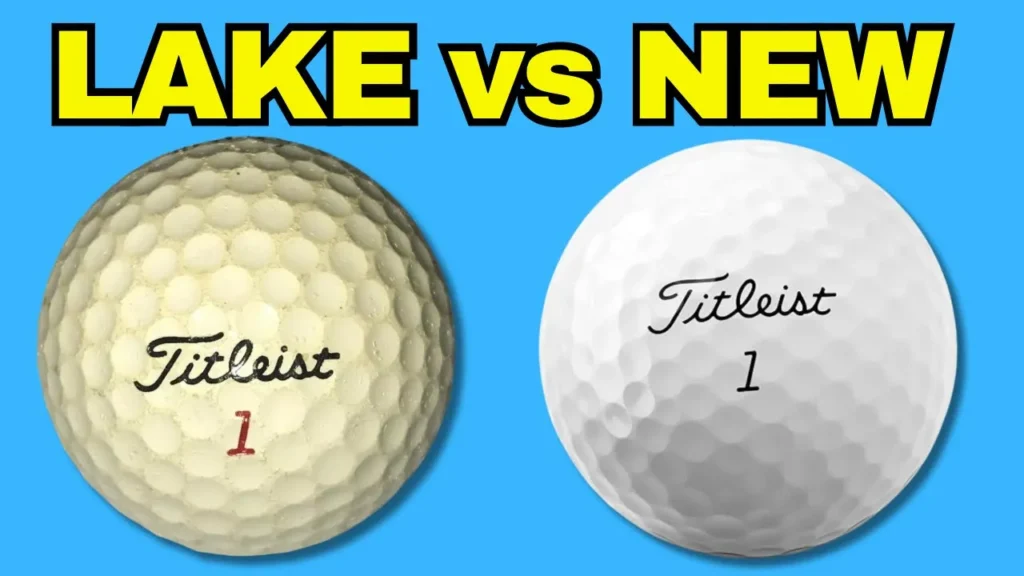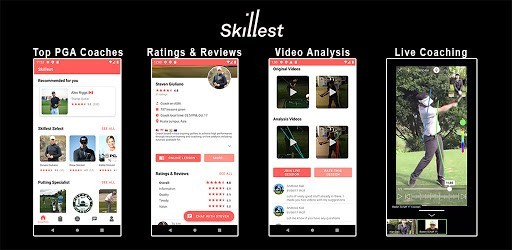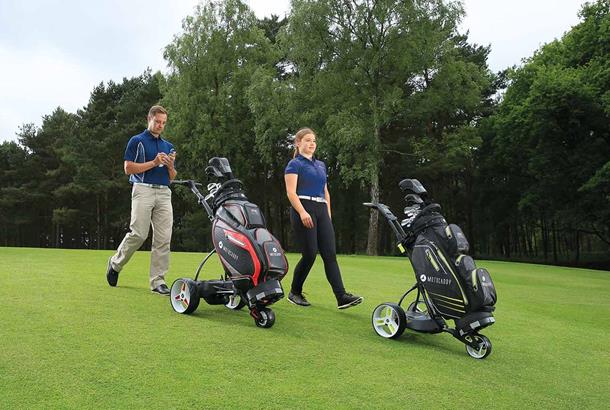Choosing the Best Bounce for Your Wedge: A Comprehensive Guide
Are you considering upgrading your golf wedges but feeling confused about the bounce? Well, don’t worry because we’re here to help! In this article, High Bounce vs Low Bounce Wedges, we’ll break down the differences between high bounce and low bounce wedges, their pros and cons, and which one may be the best choice for you.

What Is Bounce In A Golf Wedge?
Before diving into the comparison, let’s first understand what bounce is in a golf wedge. Bounce is the angle between the leading edge and the sole of the wedge. It helps the clubhead glide through the turf and prevents the club from digging too much into the ground, especially on soft turf.
High Bounce Vs Low Bounce Wedge Comparison Table
Before we delve deeper, let’s have a quick look at the key differences between high bounce and low bounce wedges.
| High Bounce Wedges | Low Bounce Wedges | |
|---|---|---|
| Bounce Angle | 10 degrees or more | Under 10 degrees |
| Turf Conditions | Soft | Firm/hard |
| Shots Produced | High shots | Low shots |
| Forgiveness | Forgiving | Unforgiving |
| Clubhead Speed | Slower | Faster |
High Bounce vs Low Bounce Wedges: In What Ways Are They Similar?
Both high bounce and low bounce wedges are designed to provide spin and control, but they differ in the way they achieve it. Both types of wedges can be made with various lofts and grinds, and the type of grind can significantly affect the club’s performance.
In What Ways Do They Differ?
The main difference between high bounce and low bounce wedges is the angle of the club’s sole, which affects how the club interacts with the turf. High bounce wedges have an angle of 10 degrees or more, while low bounce wedges have an angle of fewer than 10 degrees. High bounce wedges are suitable for softer turf, while low bounce wedges perform better on firmer surfaces.
Pros Of High Bounce Over Low Bounce
High bounce wedges are designed for players who tend to take deeper divots and for softer turf conditions. The higher angle of the clubhead helps the club glide through the grass, making it easier to hit shots out of the rough or sand. The extra bounce can also help players avoid digging the club too deep into the ground, which can lead to fat shots. Additionally, high bounce wedges are generally more forgiving, making them a great choice for beginner and high-handicap players.

Low Bounce Over High Bounce
Low bounce wedges, on the other hand, are designed for players who take shallow divots and for firmer turf conditions. The lower angle of the clubhead allows the club to cut through the turf cleanly, making it easier to hit shots from tight lies or hard ground. Low bounce wedges are also better suited for players who like to open the clubface to hit high shots around the green.
Cons Of High Bounce
The higher angle of the clubhead in high bounce wedges can be a disadvantage on firm turf conditions, making it harder to control the ball’s trajectory. High bounce wedges are also not suitable for players who take shallow divots, as the club can bounce too much off the ground and result in thin shots.
Cons Of Low Bounce
Low bounce wedges can be more challenging to hit for players who take deep divots, as the club can dig into the ground too much and result in fat shots. They are also less forgiving and require more skill and precision to hit consistently.
How Are Bounce And Grind Related In Golf Wedges?
The grind of a golf wedge refers to the shaping of the sole and trailing edge of the
The grind of a golf wedge refers to the shaping of the sole and trailing edge of the clubhead. The grind can significantly affect how the club interacts with the turf and the type of shots it produces. The grind can either add or remove bounce from the clubhead, making it a crucial factor in wedge selection.
High Bounce vs Low Bounce Wedges: What Is Wedge Grind?
Wedge grind refers to the shaping of the sole of the clubhead. It can be modified to increase or decrease the amount of bounce. Wedge manufacturers use different grinds to suit different playing styles and turf conditions.
What Grind For High Bounce?
High bounce wedges typically feature a wide sole and a higher bounce angle, making them ideal for soft turf conditions. The C grind is a popular grind for high bounce wedges as it removes material from the heel and toe, allowing the club to sit lower to the ground and making it easier to hit shots out of the rough.

High Bounce vs Low Bounce Wedges: What Grind For Low Bounce?
Low bounce wedges typically feature a narrow sole and a lower bounce angle, making them ideal for firm turf conditions. The L grind is a popular grind for low bounce wedges as it removes material from the trailing edge and heel, allowing the club to sit lower to the ground and making it easier to hit shots from tight lies.
What Type Of Shots Will High Bounce Produce?
High bounce wedges are designed to help players hit high shots with a lot of spin. The extra bounce can make it easier to get the ball out of the rough or sand and help players avoid digging too deep into the ground.
What Type Of Shots Will Low Bounce Produce?
Low bounce wedges are designed to help players hit low shots with less spin. The lower bounce angle allows the club to cut through the turf cleanly, making it easier to hit shots from tight lies or hard ground.
Which Types Of Golfers Will Prefer Low Bounce?
Low bounce wedges are typically preferred by players who take shallow divots and play on firm turf conditions. They are also better suited for players who like to hit low shots with less spin.
Which Types Of Golfers Will Prefer High Bounce?
High bounce wedges are typically preferred by players who take deeper divots and play on soft turf conditions. They are also better suited for players who like to hit high shots with a lot of spin.
What’s Better For High Handicappers?
High handicap players may benefit from using a high bounce wedge as they can help avoid digging too deep into the ground and lead to more consistent shots. However, it ultimately depends on the player’s playing style and preferences.
What’s Better For Mid Handicappers?
Mid handicappers can benefit from either a high bounce or low bounce wedge depending on their playing style and turf conditions.
What’s Better For Low Handicappers & Pros?
Low handicappers and pros generally have the skill and precision to handle both high bounce and low bounce wedges, and it ultimately comes down to personal preference and playing style.

Top High Bounce Wedges
- Titleist Vokey SM8: The SM8 features a high bounce angle and a variety of grind options to suit different playing styles. Pros: High spin, excellent control, great feel. Cons: Expensive. Score: 95/100.
- Cleveland CBX2: The CBX2 features a wide sole and high bounce angle, making it forgiving and easy to hit. Pros: Forgiving, excellent feel, versatile. Cons: Limited grind options. Score: 92/100.

Top Low Bounce Wedges
- TaylorMade Hi-Toe Raw: The Hi-Toe Raw features a low bounce angle and a unique design that promotes spin and control around the greens. Pros: Great spin, good feel, versatile. Cons: Not as forgiving as some other options. Score: 94/100.
- Callaway Mack Daddy 5 JAWS: The Mack Daddy 5 JAWS features a low bounce angle and multiple grind options for maximum versatility. Pros: Great feel, excellent spin, forgiving. Cons: Limited color options. Score: 93/100.

Are Mid Bounce Wedges Any Good?
Mid bounce wedges typically have a bounce angle between 7-9 degrees and are suitable for a wide range of turf conditions. They are a good compromise between high bounce and low bounce wedges, offering a balance of forgiveness and versatility.
Characteristics: How They Compare
Mid bounce wedges typically have a narrow to medium sole width and are designed to perform well on both firm and soft turf conditions. They offer a balance of forgiveness and versatility, making them a popular choice for many players.
High Bounce vs Low Bounce Wedges: Who Will They Suit?
Mid bounce wedges are suitable for players who take a medium-depth divot and play on a variety of turf conditions. They are also a good choice for players who want a versatile wedge that can handle a wide range of shots around the green.
High Bounce vs Low Bounce Wedges: FAQ’s:
Is More Bounce Always Better?
No, more bounce is not always better. The amount of bounce needed depends on the player’s playing style and the turf conditions they are playing on.
Best Bounce For 60 degree Wedge?
The best bounce for a 60 degree wedge depends on the player’s playing style and the turf conditions they are playing on. Generally, a higher bounce angle is recommended for softer turf conditions, while a lower bounce angle is recommended for firmer turf conditions.
Best Bounce For 52 degree Wedge?
The best bounce for a 52 degree wedge depends on the player’s playing style and the turf conditions they are playing on. Generally, a lower bounce angle is recommended for firmer turf conditions, while a higher bounce angle is recommended for softer turf conditions.
Best Bounce For 56 degree Wedge?
The best bounce for a 56 degree wedge depends on the player’s playing style and the turf conditions they are playing on. Generally, a higher bounce angle is recommended for softer turf conditions, while a lower bounce angle is recommended for firmer turf conditions.
Best Bounce For 58 degree Wedge?
The best bounce for a 58 degree wedge depends on the player’s playing style and the turf conditions they are playing on. Generally, a higher bounce angle is recommended for softer turf conditions, while a lower bounce angle is recommended for firmer turf conditions.
Does 2 Degrees of Bounce Make a Difference?
Yes, even small differences in bounce can significantly affect how the club interacts with the turf and the type of shots it produces.
What Wedge Bounce Is Best for Tight Lies?
Low bounce wedges are generally recommended for tight lies as they allow the club to cut through the turf cleanly.
What Is S Grind on a Wedge?
S grind is a wedge grind that features a narrow sole and a trailing edge that is ground down to provide versatility and playability from a variety of lies.
What Wedge Grind Is Most Forgiving?
C grind and D grind are generally considered the most forgiving wedge grinds as they feature a wide sole and a high bounce angle, making them easier to hit from a variety of lies.
What Is the Easiest Golf Wedge to Hit?
The easiest golf wedge to hit depends on the player’s playing style and preferences. However, wedges with a high bounce angle and a wide sole are generally considered easier to hit and more forgiving.
What Wedges Produce the Most Spin?
Wedges with a high amount of loft and a rough or milled face are generally the wedges that produce the most spin. The higher loft and increased friction on the clubface allow the ball to spin more, providing more control and stopping power on the green.
What Is the Rule of 12 in Golf Chipping?
The Rule of 12 in golf chipping is a method used to help golfers determine the best club to use for a specific chip shot. To use the Rule of 12, the golfer should subtract the distance from the hole to the edge of the green from 12. The resulting number is the approximate distance the ball should roll after landing on the green if hit with a low-lofted club, such as a 7- or 8-iron.
What Two Wedges Should I Carry?
Most golfers carry at least two wedges, a pitching wedge and a sand wedge. However, it is common for golfers to carry three wedges, including a gap wedge or a lob wedge, to provide more versatility and shot options around the green.
What Bounce Is Best for Flop Shots?
A high bounce angle is generally recommended for flop shots, as it helps the club glide through the turf and prevent the club from digging too much into the ground. However, the amount of bounce needed for a flop shot depends on the player’s playing style and the turf conditions they are playing on.
What Is S Grind on a Wedge?
S grind is a wedge grind that features a narrow sole and a trailing edge that is ground down to provide versatility and playability from a variety of lies. The S grind is a popular grind option for wedges as it provides versatility and allows for a variety of shots around the green.
In conclusion, the choice between high bounce and low bounce wedges ultimately depends on the player’s playing style and the turf conditions they are playing on. Both types of wedges have their pros and cons, and the type of grind can significantly affect the club’s performance. By understanding the differences between high bounce and low bounce wedges, players can choose the wedge that best suits their game and helps them score better on the course.
Remember, it’s important to choose the right wedge for your game to get the most out of your shots around the green. So, take some time to experiment with different wedge options and grinds, and choose the one that feels most comfortable and suits your playing style.
Whether you’re a high handicapper, mid handicapper, or low handicapper, there’s a wedge out there that can help you lower your scores and improve your short game. So, go ahead and give them a try, and let us know which one worked best for you!
If you’re still looking to improve your game why not check out our other articles on the Best Golf Balls, or the best golf gloves. Alternatively check out or equipment reviews with the best golf irons and the best drivers.




